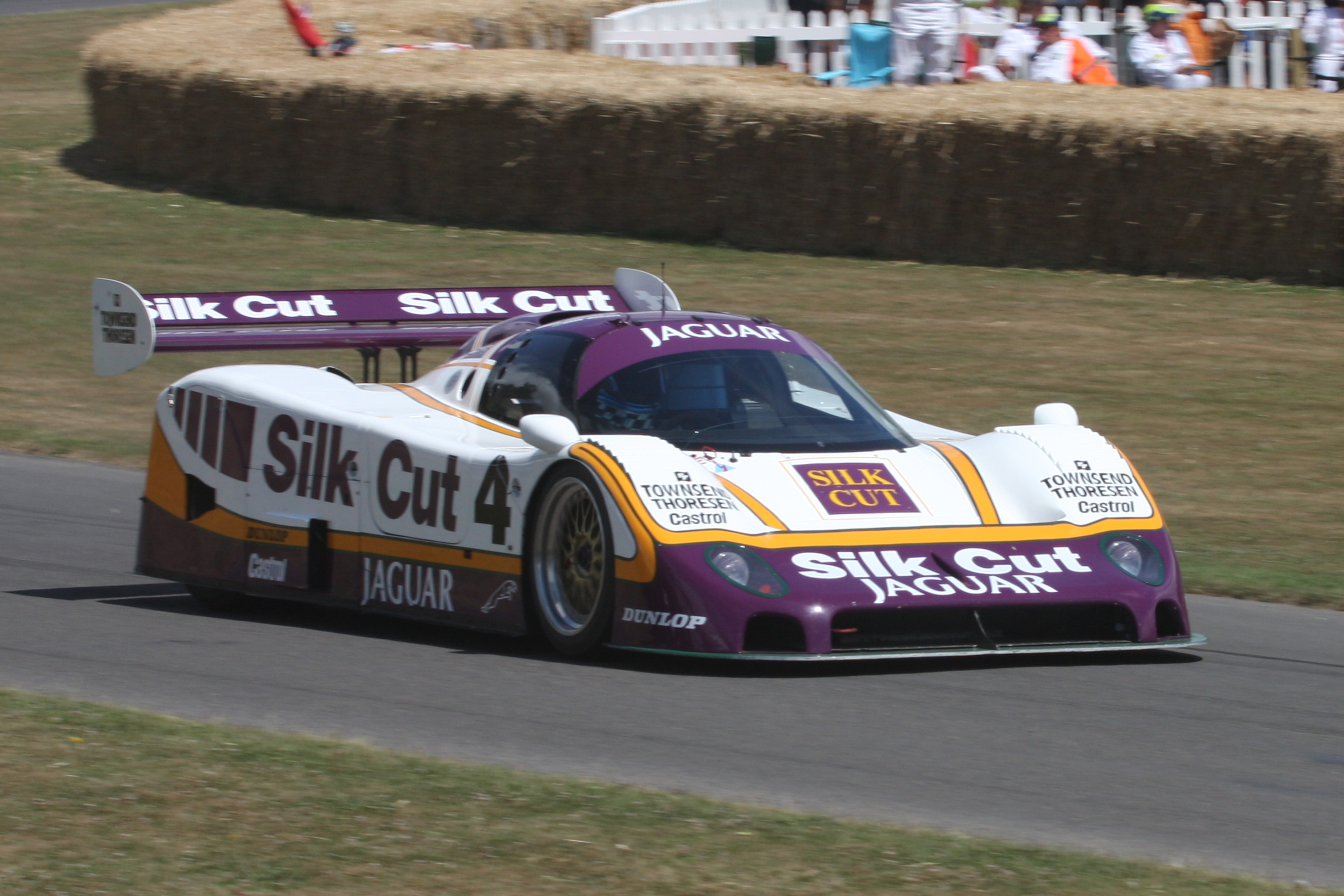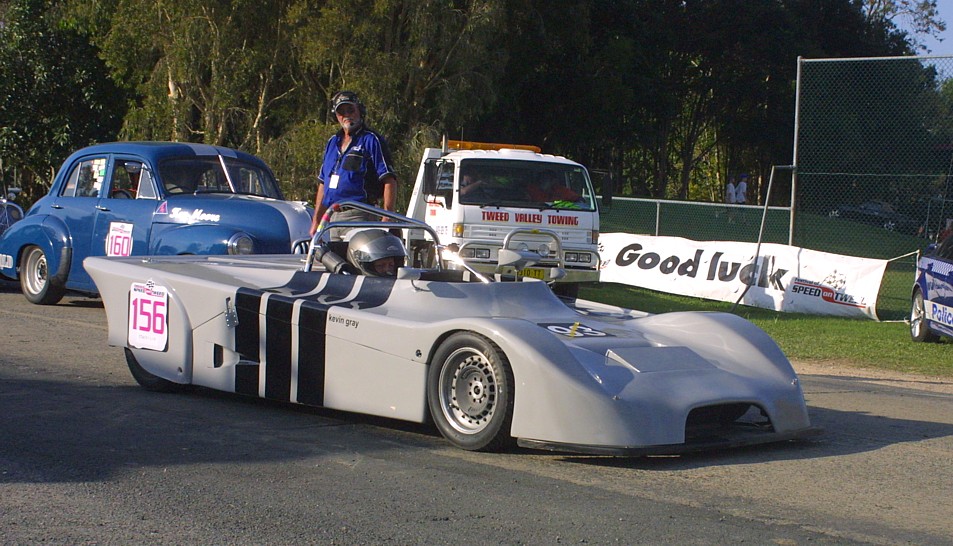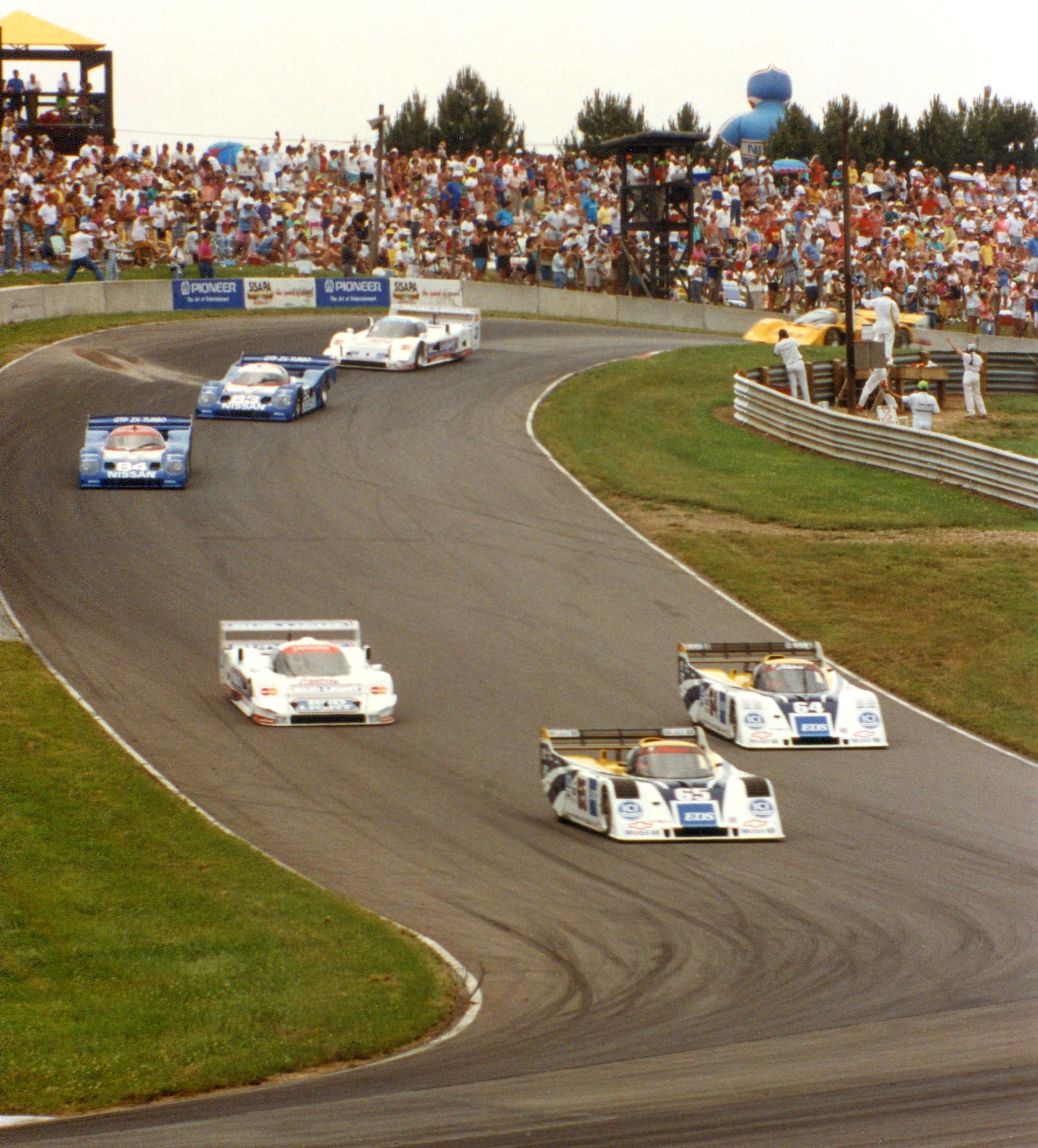|
Sports-prototype
A sports prototype, sometimes referred to as simply a prototype, is a type of race car that is used in the highest-level categories of sports car racing. These purpose-built racing cars, unlike street-legal and production-based racing cars, are not intended for consumer purchase or production beyond that required to compete and win races. Prototype racing cars have competed in sports car racing since before World War II, but became the top echelon of sports cars in the 1960s as they began to replace homologated sports cars. Current ACO regulations allow most sports car series to use two forms of cars: grand tourers (GT), based on street cars, and prototypes, which are allowed a great amount of flexibility within set rule parameters. In historic racing, they are often called "sports racing cars". Sometimes, they are incorrectly referred to as "Le Mans cars", whether they are competing in the Le Mans race or not. Types of sports prototypes Since the 1960s, various championship ... [...More Info...] [...Related Items...] OR: [Wikipedia] [Google] [Baidu] |
Sports Car Racing
Sports car racing is a form of motorsport road racing which utilises sports cars that have two seats and enclosed wheels. They may be purpose-built prototypes or grand tourers based on road-going models. Broadly speaking, sports car racing is one of the main types of circuit auto racing, alongside open-wheel single-seater racing (such as Formula One), touring car racing (such as the British Touring Car Championship, which is based on 'saloon cars' as opposed to the 'exotics' seen in sports cars) and stock car racing (such as NASCAR). Sports car races are often, though not always, endurance races that are run over relatively large distances, and there is usually a larger emphasis placed on the reliability and efficiency of the car as opposed to outright speed of the driver. The FIA World Endurance Championship is an example of a sports car racing series. A type of hybrid between the purism of open-wheelers and the familiarity of touring car racing, this style is often ass ... [...More Info...] [...Related Items...] OR: [Wikipedia] [Google] [Baidu] |
Sports 2000
Sports 2000 is a restricted-rules class of two-seat, mid-engined, open-cockpit, full-bodied sports-prototype racecar used largely in amateur road racing. Sometimes known as S2000 or S2, the class was developed by John Webb, then of the Brands Hatch racing circuit in England, as an affordable form of sports car racing, essentially a sports car version of Formula Ford 2000. The key attributes of the class were a body design reminiscent of two-liter Group 6 sports racing cars like the Chevron B21 and Lola T-212 but with an ultra-reliable and inexpensive drivetrain comprising a two-liter "Pinto" overhead camshaft engine with very limited allowed modifications and the well-proven, VW-based Hewland Mk 9 transaxle. S2000 aerodynamics continued to evolve beyond their 1970s Group 6 roots, with very 'slippery' cars featuring spats over the wheels becoming the norm. In the UK S2000 was largely seen as an alternative to front-engined Clubmans racing, a class for amateurs who were often ... [...More Info...] [...Related Items...] OR: [Wikipedia] [Google] [Baidu] |
IMSA GT Championship
IMSA GT was a sports car racing series organized by International Motor Sports Association. Races took place primarily in the United States, and occasionally in Canada. History The series was founded in 1969 by John and Peggy Bishop, and Bill France, Sr. Racing began in 1971, and was originally aimed at two of FIA's stock car categories, running two classes each; the GT ( Groups 3 and 4) and touring ( Group 1 and 2) classes. The first race was held at Virginia International Raceway; it was an unexpected success, with both the drivers and the handful of spectators who attended. For the following year, John Bishop brought in sponsor R. J. Reynolds, and in 1975 introduced a new category: All American Grand Touring (AAGT). In 1977, the series went through a series of major changes. IMSA permitted turbocharged cars to compete for the first time, as well as introducing a new category: GTX, based on Group 5 rules. In 1981, after Bishop decided to not follow FIA's newly introd ... [...More Info...] [...Related Items...] OR: [Wikipedia] [Google] [Baidu] |
Auto Racing
Auto racing (also known as car racing, motor racing, or automobile racing) is a motorsport involving the racing of automobiles A car or automobile is a motor vehicle with wheels. Most definitions of ''cars'' say that they run primarily on roads, seat one to eight people, have four wheels, and mainly transport people instead of goods. The year 1886 is regarded as ... for competition. Auto racing has existed since the invention of the automobile. Races of various sorts were organised, with the first recorded as early as 1867. Many of the earliest events were effectively reliability trials, aimed at proving these new machines were a practical mode of transport, but soon became an important way for automobile makers to demonstrate their machines. By the 1930s, specialist racing cars had developed. There are now numerous different categories, each with different rules and regulations. History The first prearranged match race of two self-powered road vehicles over ... [...More Info...] [...Related Items...] OR: [Wikipedia] [Google] [Baidu] |
Le Mans Daytona H
An LMDh (Le Mans Daytona h) is a type of sports prototype race car that will compete alongside Le Mans Hypercar entries in the Grand Touring Prototype (GTP) class of the IMSA SportsCar Championship from 2023. It also competes in the Hypercar class of the FIA World Endurance Championship. The LMDh ruleset was created jointly by the International Motor Sports Association (IMSA) and the Automobile Club de l'Ouest (ACO). The cars will serve as the successor to the Daytona Prototype International class, utilising regulations that were planned to become the next-generation Daytona Prototype International ruleset, converged with the Le Mans Hypercar ruleset. The FIA World Motor Sport Council allowed LMDh cars to participate in the 2022 WEC season on a race-by-race basis, "to ensure the seamless introduction" in 2023. History DPi 2.0 Following the FIA World Endurance Championship's transition to a winter calendar in 2018, IMSA announced in January 2018, that it would extend the ho ... [...More Info...] [...Related Items...] OR: [Wikipedia] [Google] [Baidu] |
Daytona Prototype International
A Daytona Prototype International (DPi) was a type of sports prototype racing car developed specifically for the International Motor Sports Association's WeatherTech SportsCar Championship, as their top class of car, acting as a direct replacement, and spiritual successor of the Daytona Prototypes. They are named after the main series event, the Rolex 24 at Daytona. The class made its racing debut at the 2017 24 Hours of Daytona. The Daytona Prototype International will be replaced by a joint IMSA-ACO class known as Le Mans Daytona h (LMDh) for the IMSA WeatherTech SportsCar Championship in 2023. Additionally, the LMDh class will also be able to compete in the 24 Hours of Le Mans and the FIA World Endurance Championship in 2023. Developmental History On the 2nd of July 2015, IMSA announced the base regulations for its then un-named new for 2017 Prototype class of the WeatherTech Sportscar Championship, which would succeed and replace the Gen 3 Daytona Prototypes, and Le Mans P ... [...More Info...] [...Related Items...] OR: [Wikipedia] [Google] [Baidu] |
Daytona Prototype
A Daytona Prototype is a type of sports prototype racing car developed specifically for the Grand American Road Racing Association's Rolex Sports Car Series as their top class of car, which replaced their main prototype racing class, specifically Le Mans Prototypes (LMPs). The cars later competed in the merged series of the WeatherTech SportsCar Championship, from 2014-2016, before being phased out and replaced by the Daytona Prototype International class in 2017. They are named after the main series event, the Rolex 24 at Daytona. Development For the 2003 Rolex Sports Car Series season, the Grand American Road Racing Association (GARRA) announced that they would stop support of their two premier open cockpit classes, known as SRP-I and SRP-II. These cars, mostly modified from Le Mans Prototypes, were technologically advanced and could reach high speeds, specifically on the Mulsanne Straight at the 24 Hours of Le Mans. However, these same speeds were found to be extre ... [...More Info...] [...Related Items...] OR: [Wikipedia] [Google] [Baidu] |
Le Mans Hypercar
A Le Mans Hypercar (LMH) is a type of sports prototype race car that competes alongside LMDh entries in the Hypercar class of the FIA World Endurance Championship. It will also compete in the Grand Touring Prototype (GTP) class of the IMSA SportsCar Championship from 2023. The Le Mans Hypercar regulations were created jointly by the Automobile Club de l'Ouest (ACO) and the Fédération Internationale de l'Automobile (FIA) as a successor to the Le Mans Prototype 1 (LMP1) from the 2021 season onwards. History Demise of LMP1 class Following the successive exits of Audi and Porsche from the FIA World Endurance Championship at the end of the 2016 and 2017 seasons in the aftermath of the Volkswagen emissions scandal affecting the Volkswagen Group (parent company of both manufacturers), as well as spiralling costs in the LMP1 Hybrid sub-category, the ACO began a series of discussions aimed at reducing the costs of competition for the next generation of LMP1 rules. Initially, a si ... [...More Info...] [...Related Items...] OR: [Wikipedia] [Google] [Baidu] |
Le Mans Prototype Challenge
The Le Mans Prototype Challenge (shortened to LMP Challenge or LMPC) was a spec sports prototype formula created by the Automobile Club de l'Ouest (ACO), organisers of the 24 Hours of Le Mans, and sports car constructor Oreca. The formula is intended as part of a ladder system for young and upcoming drivers into the world of endurance racing while also serving as a value engineered entry for drivers and teams into Le Mans Prototypes due to limitations on manufacturers and suppliers. Initially launched as an independent racing series known as the Formula Le Mans Cup in 2009, the formula has since been expanded to allow participation in three separate series for 2010. The American Le Mans Series used the title Le Mans Prototype Challenge since its inception. The Le Mans Series used the name Formula Le Mans until 2011. All ACO series adopted the name Le Mans Prototype Challenge in 2012. Oreca FLM09 The Formula Le Mans car is built by French manufacturer Oreca and known as the F ... [...More Info...] [...Related Items...] OR: [Wikipedia] [Google] [Baidu] |
Le Mans Prototype
A Le Mans Prototype (LMP) is the type of sports prototype race car used in the 24 Hours of Le Mans, FIA World Endurance Championship, IMSA SportsCar Championship, European Le Mans Series and Asian Le Mans Series. Le Mans Prototypes were created by the Automobile Club de l'Ouest (ACO). The technical requirements for an LMP include bodywork covering all mechanical elements of the car. Currently, there are three classes within Le Mans Prototypes, designated LMP1, LMP2, and LMP3. While not as fast as open-wheel Formula One cars around a track, LMP1s were the fastest closed-wheel racing cars used in circuit racing. Le Mans Prototypes are considered a class above production-based grand tourer cars, which compete alongside them in sports car racing. Later LMP1 designs included hybrid cars that use electric motors to assist acceleration. The Le Mans Prototype LMP1 class has been replaced by Le Mans Hypercars in the FIA World Endurance Championship, and the 24 Hours of Le Mans f ... [...More Info...] [...Related Items...] OR: [Wikipedia] [Google] [Baidu] |
Group CN
Group CN is a category of motorsport, introduced by the FIA in the early nineties for sports car racing. Group CN cars are mainly seen in hillclimbing championships or sports racing series. Group CM is a non-FIA class which is closely related to Group CN. Major racing series Group CN rules are applied to a variety of championships. Many championships alter the rules in their own way like the Radical European Masters and V de V championships. Radical European Masters The Radical European Masters is a spec racing series in Europe. It features the Radical SR8, Radical RXC Spyder and Radical SR3, each in their own class. V de V The French-based V de V organisation features two FFSA Group CN based classes. The endurance championship is open for any chassis and engine within the regulations. The V de V organisation also features the Funyo Challenge open to Peugeot powered Funyo 4 or Funyo 5. National championships A Group CN racing class exists in many countries, many o ... [...More Info...] [...Related Items...] OR: [Wikipedia] [Google] [Baidu] |
Group C
Group C was a category of sports car racing introduced by the FIA in 1982 and continuing until 1993, with '' Group A'' for touring cars and '' Group B'' for GTs. It was designed to replace both Group 5 special production cars (closed top touring prototypes like Porsche 935) and Group 6 two-seat racing cars (open-top sportscar prototypes like Porsche 936). Group C was used in the FIA's World Endurance Championship (1982–1985), World Sports-Prototype Championship (1986–1990), World Sportscar Championship (1991–1992) and in the European Endurance Championship (1983 only). It was also used for other sports car racing series around the globe ( All Japan Sports Prototype Championship, Supercup, Interserie). The final year for the class came in 1993. Broadly similar rules were used in the North American IMSA Grand Touring Prototype series ( GTP). History The roots of the Group C category lie in both FIA Group 6 and particularly in the GTP category introduced by the ACO ... [...More Info...] [...Related Items...] OR: [Wikipedia] [Google] [Baidu] |




_1st.jpg)





